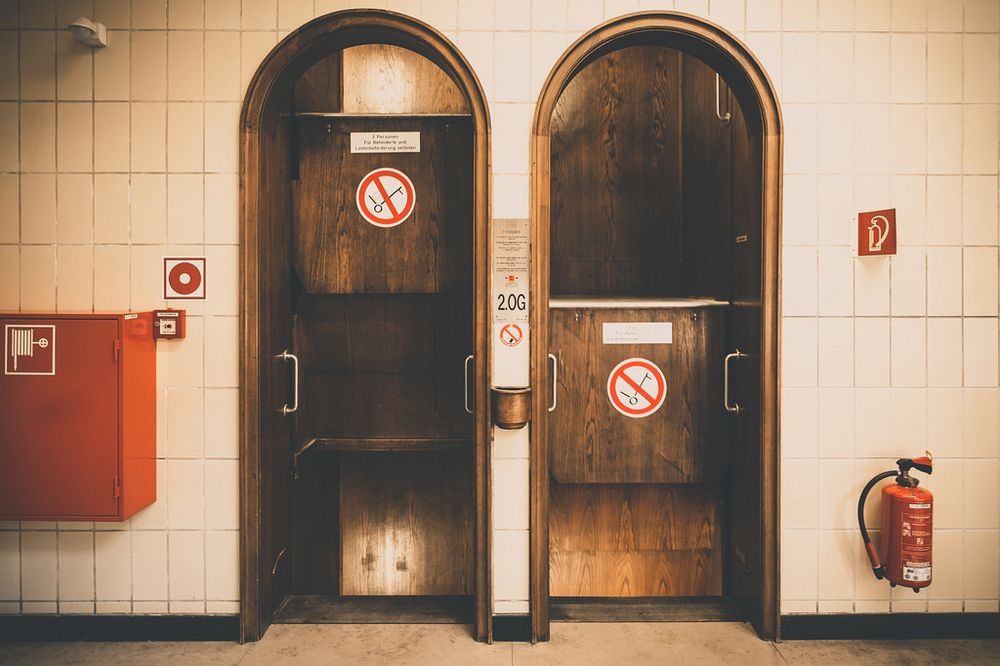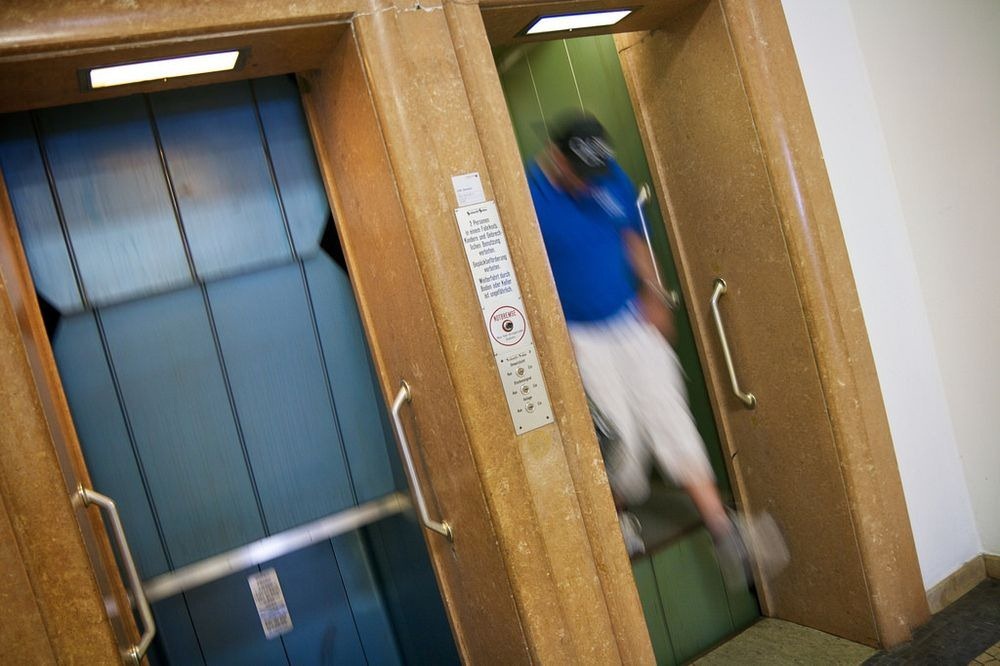History of Paternoster elevator - unique architecture or 'deadly' trap

Paternoster is the name for a type of elevator consisting of a series of openings that are moved continuously up and down the vertical axis of a building in an unending loop.
The special thing is that this elevator never stops, unless there is a technical problem, causing the system to stop. Passengers enter the compartments moving in their desired direction, then exit when the elevator reaches the desired floor.

As mentioned, because this system is non-stop, there will be no stops between floors, and passengers must always focus to step out on time, otherwise they will be delayed, lose momentum leading to slipping. falls, or even fatal accidents.
Practice has proven that although this model looks convenient, it can easily become a "death trap": Just a small mistake can cause you to have a broken toe, lose an arm. , or even life.
Most Paternoster ladders do not have doors or screens for added convenience. This makes passengers even more vulnerable, because they can lose their balance and fall out while the elevator is moving, even though it is many times slower than a conventional elevator.
The first Paternoster was installed in 1884 in Dartford, England. Seven years ago, its patent was registered by a British engineer named Peter Hart. The name paternoster comes from the Latin word "Our Father", which is the first two words of "The Lord's Prayer".
Paternosters became very popular in Europe during the first half of the 20th century because they could carry more passengers than conventional elevators. Not only that, it's also an extremely quick method of moving from floor to floor because there's no need to queue to wait for the elevator.

Paternoster-style elevators make passengers very susceptible to accidents if not paying attention.
However, safety has made the Paternoster ladder less popular, especially in places with young children and the elderly. Many countries have banned the use of the Paternoster scale, making it extinct.
The accidents happen mainly because ladders are used for wrong purposes, such as transporting bulky items, or for the elderly or children. It is estimated that the accident risk of the Paternoster ladder is 30 times higher than that of a conventional elevator. A representative of the Union of Technical Inspection Societies said that before 2002, Germany had an average of one death per year from the Paternoster scale.
The German government at least twice wanted to close this "deadly" model, but it received strong opposition from the public. Paternoster advocates argue that if the ladders were to be banned, it would be best to shut down cars as well, since they both pose a risk of accidents. "These elevators are part of industrial history," they said.

Paternoster-style elevator at Stuttgart City Hall
However, in Western Europe, Eastern Europe and many other parts of the world, the installation of paternosters has been banned since 1974.
In April 2006, Hitachi announced plans for a modern paternoster-style elevator with computer-controlled compartments and standard doors to alleviate safety concerns. A prototype was launched in February 2013.
Today, paternoster-style elevators can still be found in some administrative buildings such as the Government Department, town hall or police headquarters.
- Paternoster - The most dangerous elevator in the world
- 6 types of deadly pitfalls common in ancient tombs
- Why did I look up at the elevator?
- The most spectacular elevator works in the world
- March 23, 1857: The first elevator is put into use
- Jump up when the elevator lifts will survive?
- How to handle when the elevator falls freely
- What are floors B, G, R in the lift?
- Rules for choosing a place in the elevator
- Why are mirrors in the elevator often fitted?
- Hitachi will soon have the world's fastest elevator
- Elevator obsession
 Biography of hero Vu A Dinh
Biography of hero Vu A Dinh History of hematology
History of hematology Who is Mr. Tam Da 'Phuc-Loc-Tho' and what does it mean?
Who is Mr. Tam Da 'Phuc-Loc-Tho' and what does it mean? Unbelievable facts about the history of the oil and gas industry: Gasoline used to be cheaper than water, so abundant that it had to be dumped into the river...
Unbelievable facts about the history of the oil and gas industry: Gasoline used to be cheaper than water, so abundant that it had to be dumped into the river...